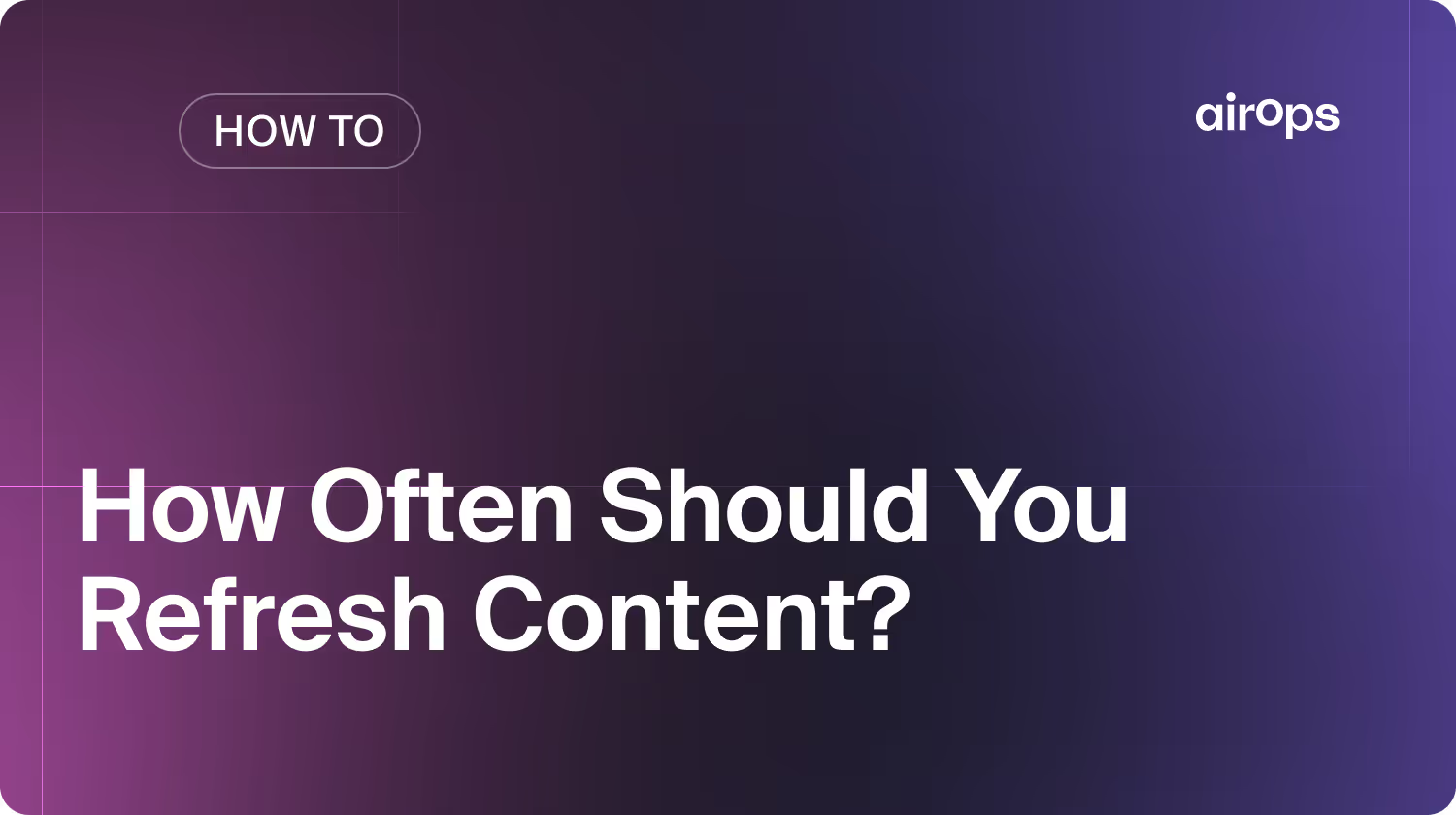What Is a Keyword Gap Analysis? How-To Guide & Best Practices

- Keyword gap analysis identifies valuable search terms your competitors rank for that you're missing, revealing untapped traffic opportunities.
- Explore a 6-step framework to help you systematically discover, prioritize, and target these keyword gaps for strategic SEO advantage.
- Implementing these insights with proper content optimization can significantly improve your search visibility and drive qualified organic traffic.
Understanding keyword gap analysis is essential for anyone aiming to strengthen their SEO strategy and outperform competitors.
By identifying missed keyword opportunities, you can target high-value search terms that drive meaningful organic growth.
What Is a Keyword Gap Analysis?
Keyword gap analysis is a focused SEO strategy that compares your website’s keyword rankings to those of your competitors.
This process helps you identify valuable search terms your competitors rank for, but you do not.
Conducting a keyword gap analysis helps uncover keyword opportunities that can drive new traffic and improve your visibility. By targeting these gaps, you can refine your content strategy and stay ahead in your industry.
Benefits of Keyword Gap Analysis
Keyword gap analysis offers several significant benefits for your SEO strategy and overall online visibility.
- Uncover Missed Opportunities: Conducting a thorough keyword gap analysis helps you discover valuable keywords your competitors successfully target that you still need to incorporate into your content. These missed opportunities represent untapped potential for attracting relevant traffic to your site.
- Inform Content Strategy: Keyword gap analysis provides valuable insights into content gaps on your website. It reveals topics and keywords your target audience is actively searching for that you haven't adequately covered.
- Boost Search Visibility: Targeting keywords you've previously missed through new and optimized content can significantly increase your visibility in search engine results pages (SERPs). Creating content that fills the identified keyword gaps improves your chances of ranking for those terms and attracting more organic traffic.
How often should I conduct a keyword gap analysis?
For optimal results, conduct a comprehensive keyword gap analysis quarterly to capture market shifts and competitor strategy changes. However, implement monthly check-ins for high-priority keyword segments to identify emerging opportunities.
How to Conduct a Keyword Gap Analysis
Conducting a keyword gap analysis involves several key steps to identify valuable opportunities and effectively incorporate them into your content strategy. Here are some core aspects of conducting a perfect keyword gap analysis.
1. Select Relevant Competitors
Start by choosing 2-3 top niche competitors with a strong organic search presence.
- Identify direct competitors who target similar audiences and rank well for your industry terms.
- Focus on businesses with comparable domain authority but better keyword coverage to find realistic opportunities.
These competitors should be businesses that closely resemble yours regarding products, services, or target audience. Analyzing their keyword rankings will provide the most relevant and actionable insights for your SEO efforts.
2. Find Keyword Gaps
To uncover keyword gaps, use keyword research tools to compare your rankings with theirs and identify missing keywords.
- Tools like SEMrush, Ahrefs, and Moz provide comprehensive gap analysis features that visualize keyword overlaps.
- Export and analyze data to identify patterns in competitors' ranking success.
- Look beyond obvious primary keywords to discover long-tail variations that drive qualified traffic.
3. Prioritize High-Value Keywords
Once you have a list of keyword gaps, prioritize the most relevant to your business and have sufficient search volume to drive meaningful traffic.
- Focus on terms with realistic ranking potential based on your domain authority and content resources.
- Evaluate keyword difficulty scores alongside search volume to find the optimal effort-to-reward ratio.
- Consider commercial intent—prioritize keywords that indicate purchase readiness or solution-seeking behavior.
4. Group Keywords into Clusters
Organize the prioritized keywords into thematic clusters based on relevance and search intent. Grouping related keywords will help you create comprehensive, targeted content that addresses multiple queries and provides value to your audience.
- Organize keywords to inform targeted content creation that satisfies specific user needs.
- Map clusters to different stages of the buyer's journey (awareness, consideration, decision).
- Identify content types that best serve each intent cluster (guides, comparisons, reviews, etc.).
This approach also ensures your content aligns with the user's intent behind each search query.
5. Create and Optimize Content
With your keyword clusters in hand, develop new content pieces that specifically target the identified keyword gaps.
- Address the identified gaps with high-quality, intent-driven content that exceeds what competitors offer.
- Implement semantic SEO by including related terms and entities that strengthen topical authority.
- Structure content with clear hierarchy using proper heading tags (H1-H6) and schema markup when applicable.
For existing pages on your site, optimize them by strategically including relevant keywords you may have missed earlier.
6. Leverage automation tools to streamline the process
Manually conducting a keyword gap analysis can be time-consuming and complex, especially when managing large-scale content strategies.
- Set up regular monitoring to track progress and identify emerging keyword opportunities.
- Use AI-powered content optimization tools like AirOps to ensure comprehensive topic coverage and maintain a competitive edge.
AI tools can quickly process vast amounts of data, identify opportunities, and even suggest keyword clusters to target, saving time and resources while delivering actionable insights.
By pairing gap analysis with AI-powered content generation, AirOps eliminates inefficiencies and helps you generate targeted, high-quality content that ranks. If you're looking to scale your content strategy while maintaining precision and relevance, AirOps is the ultimate tool to help you succeed.
Optimize your processes and start building better content faster. Sign up to AirOps today.
Can keyword gap analysis work for new websites with limited ranking data?
New websites can leverage keyword gap analysis by focusing on low-competition opportunities identified from competitor research.
This approach allows you to build initial visibility through strategic content targeting while avoiding direct competition for high-difficulty terms.
Start with long-tail variations and niche-specific keywords where established competitors might have content gaps, then gradually expand your keyword footprint as your domain authority grows.
Tips for Effective Keyword Gap Analysis
Maximize your keyword gap analysis with these data-driven, actionable tactics:
- Target semantic keyword variations and long-tail phrases to expand your content footprint—research shows these can increase organic traffic by 30-50% when strategically implemented.
- Optimize strategically for SERP features like featured snippets, knowledge panels, and 'people also ask' boxes, which can increase CTR by up to 30% according to Advanced Web Ranking studies.
- Implement a continuous monitoring system that tracks both your keyword performance and competitive movement—set up automated alerts for ranking changes to enable rapid tactical adjustments.
- Analyze user engagement metrics (time on page, bounce rate) alongside rankings to determine which keyword-targeted content truly satisfies search intent.
- Leverage historical ranking data to identify seasonal opportunities and timing patterns in your industry's keyword landscape.
Elevate Your SEO with Keyword Gap Analysis
Keyword gap analysis is a proven way to uncover missed opportunities, refine your content strategy, and boost your search visibility.
By leveraging research-backed tools and actionable frameworks, you can stay ahead of the competition and drive measurable growth.
How AirOps Can Help With Keyword Gap Analysis
AirOps empowers you to automate and scale your keyword gap analysis with AI-driven workflows and seamless integrations.
Book a strategy session to see how our platform can help you capture high-value keywords, optimize your content, and future-proof your SEO strategy.
Win AI Search.
Increase brand visibility across AI search and Google with the only platform taking you from insights to action.
Get the latest on AI content & marketing
Get the latest in growth and AI workflows delivered to your inbox each week







.avif)